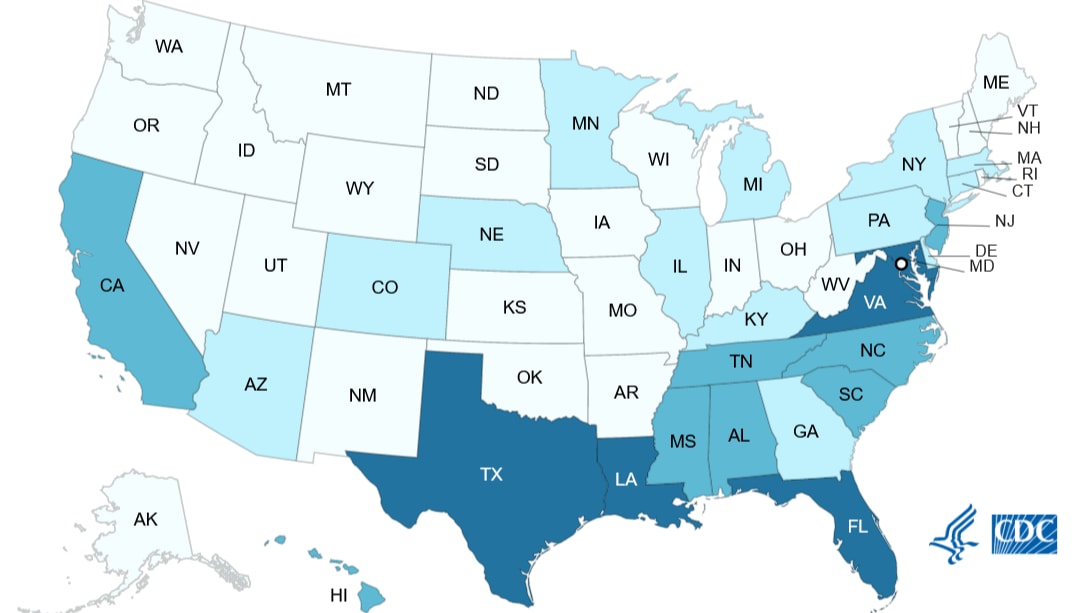At a glance
- The Cholera and Other Vibrio Illness Surveillance (COVIS) system is used for reporting U.S. cases of Vibrio infection (cholera and vibriosis).
- Information in COVIS helps CDC track infections and determine patient, food, and environmental risk factors.

Background
CDC initiated COVIS in 1989 in collaboration with the U.S. Food and Drug Administration and four Gulf Coast states (Alabama, Florida, Louisiana, and Texas). CDC maintains COVIS.
What's collected
Health officials report cases of Vibrio infection using the COVIS report form, which captures the following information:
- A description of the person's illness and underlying health conditions
- Recent seafood consumption
- Recent exposure to:
- Bodies of water
- Raw or live seafood or their drippings
- Marine life
- Bodies of water
- Source(s) of implicated seafood
Data
Annual summaries of COVIS data
Searchable data tools
The BEAM (Bacteria, Enterics, Amoeba, and Mycotics) Dashboard provides timely data on pathogen trends and serotype details to inform work to prevent illnesses from food and animal contact.
FoodNet Fast provides information on Vibrio and selected other pathogens transmitted commonly through food, including data on rates of illness and diagnostic testing practices.
NORS Dashboard contains information from reports of outbreaks of foodborne, waterborne, and enteric (intestinal) diseases spread by person-to-person contact, environmental contamination, animal contact, and other means.
Other Vibrio surveillance
Some other systems at CDC conduct surveillance on Vibrio infections and outbreaks in the United States.
